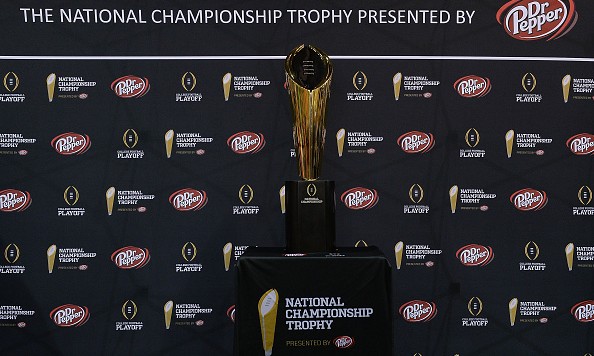When talking about college football and the often-subjective rankings, we hear about “style points” a lot. We hear about how this team impressed and that team didn’t and why that matters. When people talk about “style points,” they often really mean whether or not a team runs up the score. And we hear about others fighting against that notion. “A win is a win” is a common phrase that might be argued.
Both arguments are flawed and foolish because both miss the point that there is an obvious middle ground. And that middle ground is important. Without it, we would not be able to accurately judge college football teams.
ESPN has dubbed this week “Style Points Saturday.” That’s a nice, fun way to refer to the fact that the vast majority of contenders this week will be feasting on cupcakes instead of playing tough games. Many of these games might be of the “name the score” variety. And maybe, just maybe, the extent of the blowouts involved will influence the major polls–which could in turn influence the CFP Selection Committee.
I thought that John Heisman cured us of the notion of the value of blowouts almost a century ago. Beating a team 222-0 is meaningless if it’s against a team that can’t play. More recently, the BCS taught us this lesson when they were forced to make the computers remove margin of victory from their formulas, as teams would attempt to beat the system by running up scores on their more helpless opponents. Because, really, the difference between 42-0 and 77-0 is how early the coach closes the playbook and pulls the starters. Style points are meaningless past a certain points. And while some voters might, unfortunately, still be impressed with gaudy numbers, most recognize that putting up 49 is essentially the same as putting up 70.
On the opposite end of the spectrum, though, is a major issue. The aforementioned ESPN article quoted coaches, such as Jim McElwain and Dabo Swinney, that “style points” don’t really matter at all. In some ways, they don’t. If a Power 5 team wins every game, even by just one point, it will be in the Playoff. Ohio State proved that back in 2002 (in the BCS), and, more recently, Florida State basically proved that in 2014. If you win every game, winning pretty doesn’t matter.
Sometimes, however, winning ugly does matter. When voters saw Florida struggle against UMass and enter the fourth quarter with only a three-point lead, they rightfully dropped the Gators. Not every game is created equal. If you struggle against a really bad team, your team’s reputation will suffer for it. That is simple and logical. Again, if Florida can run the table in a P5 conference, it won’t matter. But if Florida comes through the SEC East at 10-2, with its best win being over Tennessee, and has a whole bunch of lackluster wins over really bad teams, of course the Gators will be graded poorly in the eyes of the committee. Barely beating really bad teams isn’t a lack of “style points.” It’s a sign of a not-so-great team.
The case where everyone intuitively agrees about this is by the Group of 5 teams. Very few would argue that an undefeated Sun Belt team that barely squeaked through against an abysmal schedule would deserve a Playoff spot. Being marginally better than the rest of the Sun Belt (or MAC or Conference-USA) does not make a team one of the best four in the country. Not even close. So when we have G5 teams that appear to have National Champion-caliber talent (think Boise State during the Kellen Moore years), we expect them to blow their lower competition out of the water. When they don’t succeed in doing that, we punish them severely. Just look at how the polls treated Boise State and TCU when they failed to blow out teams. This may sound unfair, but it is quite logical. If they are facing inferior competition, how else are we to judge them?
When looking at P5 schedules, it matters a lot less. No P5 team is going to just squeak by bad teams and make the Playoff; it’s just not possible. Every P5 team plays enough good teams that “squeaking by” still shows an ability to beat good teams. At the very top of the rankings when looking at the actual Playoff contenders, “style points” should never really matter. The committee is smart enough to know that the difference between winning by 40 and winning by 60 is effectively zero.
Where it could matter, though, is down the line for the New Years’ 6 games. There we could have our aforementioned 10-2 Florida team. Sure, the Gators would have a solid win over Tennessee. But they could also have really ugly-looking non-blowout wins over UMass, North Texas, and Presbyterian, hypothetically. In that situation, the committee would have to really think about whether Florida is anywhere near as good as its record shows, or whether the Gators are a product of a bad SEC East and two winnable cross-divisional games. One close game against a bad team would slide by. But multiple ones raise serious questions. Beating a team as bad as UMass by 17 (and only leading by three to start the fourth quarter) isn’t just a lack of “style points”; it’s a sign of a very bad game. Have enough of those, and it will affect a team’s ranking–as it should.

